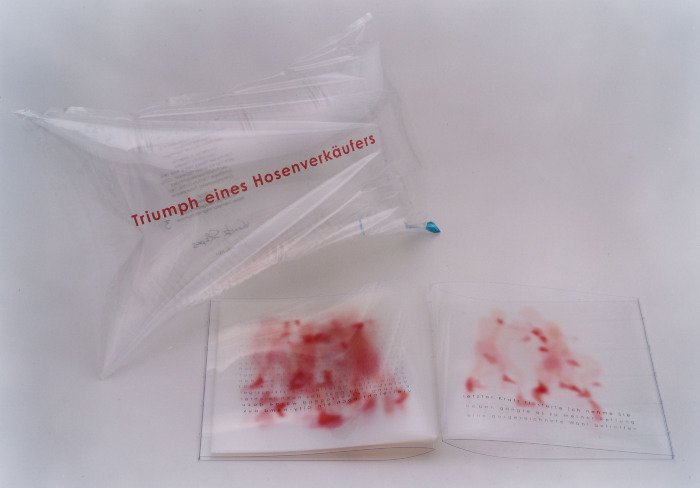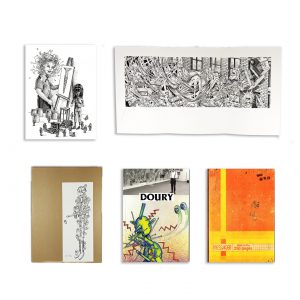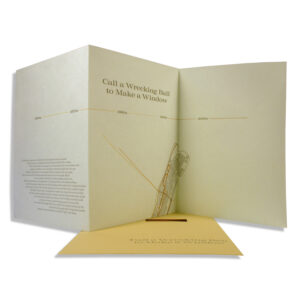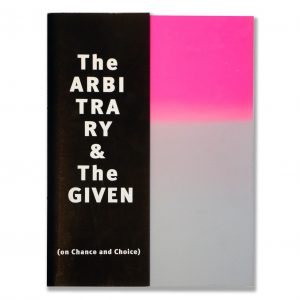The Triumph of the Trouser Salesman
The Triumph of the Trouser Salesman
Date
2002
Edition Size
15
Media
Inkjet
Paper
Polyethylene foil
Binding
Hand-sewn
Format
Artist Book
Dimensions
9.25 × 8.25 in
Pages
20
Location
Tokyo, Japan
Enclosure
White fleece bag
Collection
Limited Edition Artists Books$ 14,000.00
Unavailable
View Collectors
Bayerische Staatsbibliothek
Boston Athenaeum
College of Saint Benedict & Saint John's University
Florida Atlantic University (FAU), The Jaffe Book Arts Collection
Louisana State University (LSU)
Multnomah County Public Library
Reed College
Universitätsbibliothek Johann Christian Senckenberg, Zentralbibliothek
University of California, Los Angeles (UCLA), William Andrews Clark Library
University of California, Santa Barbara (UCSB)
Virginia Commonwealth University (VCU)
Wellesley College
Second edition Tokyo 2002, 15 Arabic numbered copies and three Roman numbered Arabic numbered copies 20 pages with inkjet prints on clear polyethylene foil. Cover made of clear polycarbonate.
The pages are stitched on gum cords that also bend the cover. Inflatable air cushion with stamped title in red and imprint in black. White fleece bag. 23.5 x 21 cm. Signed by the artist and the author.
In his text “Triumph of a Pants Seller”, the Berlin-based author Heiko Michael Hartmann conveys the precarious situation of a customer who is forced by the salesperson to buy a pair of trousers. He does not only get advice but is pushed so much that he has the feeling of being the opponent in a boxing match. His aim is no longer to buy the trousers but to escape from the scene.
The text consists of twenty lines, each of which can stand alone, but also can be read together with the previous or following line and then gets a different meaning. Some words are even doubled, which lets the reader feel like jumping around. The way of reading underlines the contents of the text: the similarity of buying pants and being attacked in a boxing match.
The format of the book is a square, according to a boxing ring. The text is set in a square as well to mark the area where the boxers are moving. The book consists of 20 pages of clear foil, with one line of text and two boxers’ silhouettes on each page. The boxers are printed as red shadows and only become visible when the pages are turned. When the pages are lying one above the other, the boxers fuse into a colored mass visualizing the movements.
The single foils are stitched onto transparent gum cords that for their part give tension to the flexible plastic cover and symbolize the strings of a boxing ring. The bent cover is designed in a way that it pushes the spine of the book upwards, in order to make the book easy to open.
To emphasize the transparency of the book, the title, and colophon are printed on an inflatable plastic cushion that serves as the case for the book. By being light-weighted, the cushion is corresponding with the glue-free binding of the book, and by its shape, it is corresponding to the profile of a sand sack. Cushion and book are wrapped in white paper felt, the same material we receive as wrapping in a store, when we buy really expensive clothes.





